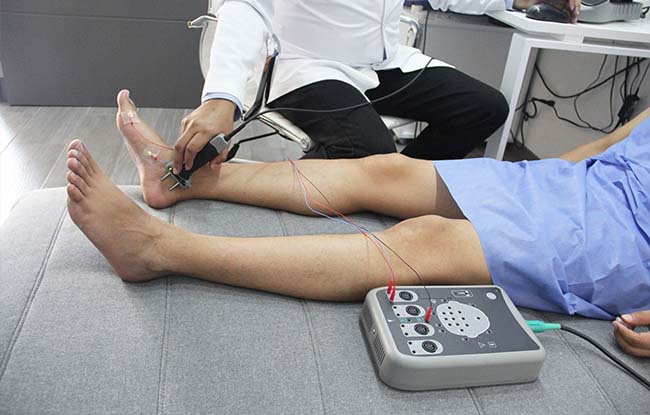Electromyography and Nerve Conduction Studies
Electromyography and Nerve Conduction Studies
It is common for anyone to have sore or weak muscles after a workout or other strenuous activities. But if you don’t know the reason behind your sore muscles, it is not a good idea to sleep over it. Always be mindful and try to understand the pattern and onset of your sore or weak muscles. Humans likely procrastinate on work or personal-related projects, medical visits, etc. Too common but not the right thing to do. Electromyography (EMG) and nerve conduction studies (NSC) are the most common tests to measure the electrical activity of muscles and nerves. They are often done simultaneously as the EMG test looks at the muscles' electrical signals at rest and when used. Meanwhile, the NSC test examines how fast and well the body’s electrical signals travel to your nerves.

Benefits of Electromyography and Nerve Conduction Study
EMG and nerve conduction studies are used to help diagnose various muscle and nerve disorders. An EMG test helps determine if muscles respond the right way to nerve signals. Nerve conduction studies help detect any nerve disease or damage. If you encounter the following symptoms, these tests can help you embark on the healing journey.
- Muscle weakness
- Tingling or numbness
- Muscle spasms, cramps, twitching
- Muscle paralysis
How Does Electromyography and Nerve Conduction Study Work?
The patient sits or lies on the table or bed for an Electromyography test. Then the healthcare practitioner cleans the skin over the muscle that will be tested. Then place a needle electrode into the muscle through which mild electrical current flows. Then record the muscle activity while the patient is at rest. The patient must contract the muscle slowly and steadily, and the machine records this activity. Then the electrode may be moved to record activity in different muscles. This activity is recorded and presented on a video screen.
Meanwhile, the patient sits or lies down on the table or bed for a nerve conduction study. Then tape or paste and attach one or more electrodes to nerve or nerves. Then attach these different types of electrodes to the muscle/muscles controlled by nerves. These electrodes record responses, and then the healthcare practitioner sends a small pulse of electricity through electrodes to stimulate the nerve to signal the muscle. The time your muscle takes to respond to the nerve signal is recorded.
